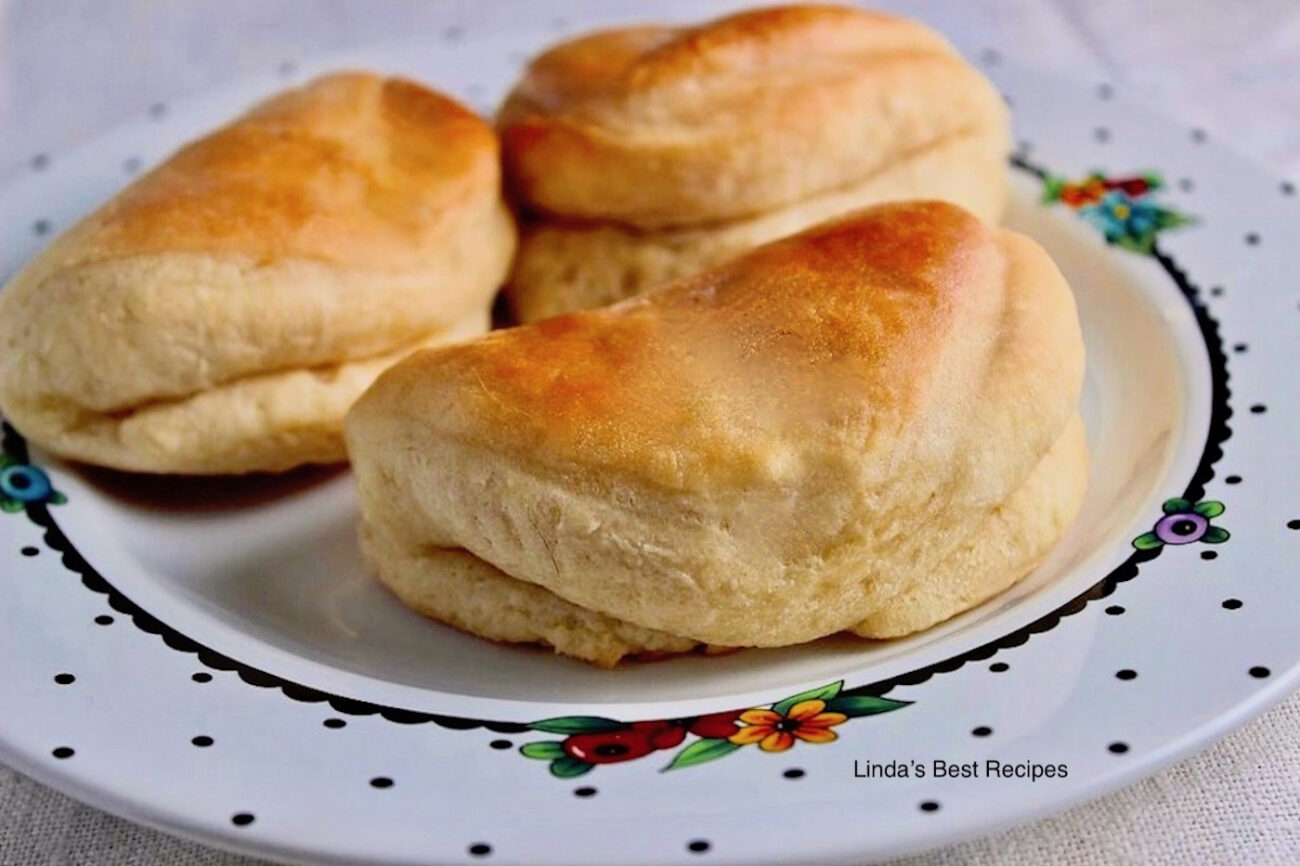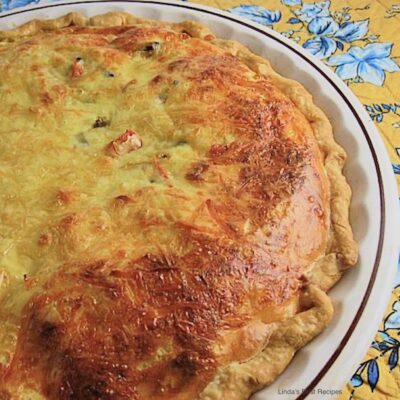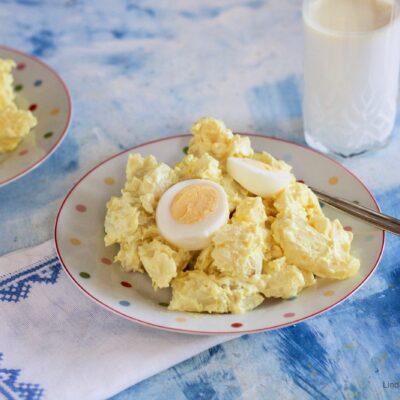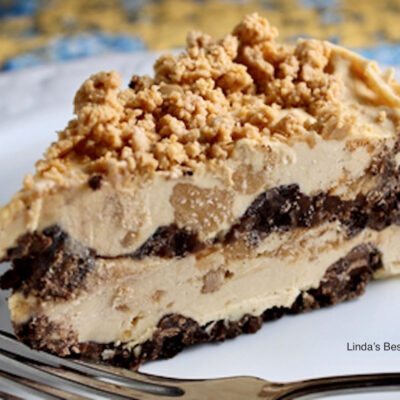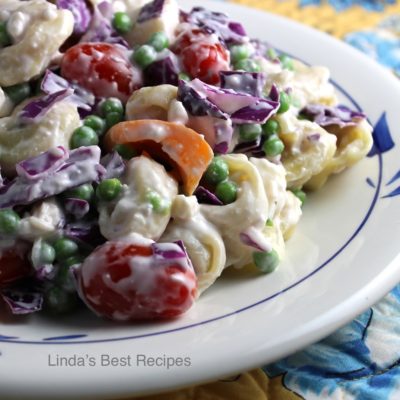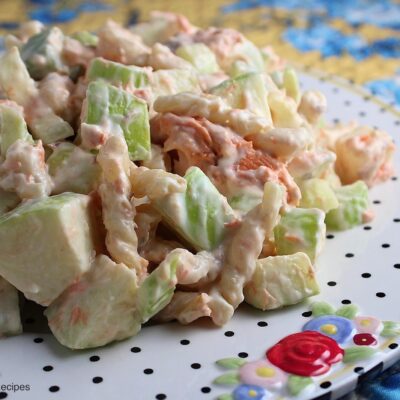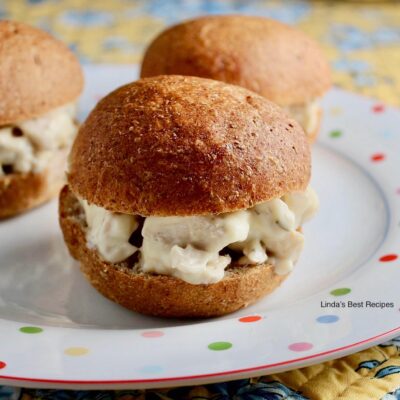About This Recipe
If you are looking for the best dinner roll in the world, look no further. My Grandmother Matha’s Parker House Rolls are the best. Period. The rolls are super light and fluffy and they melt in your mouth. Not only that, but they are drenched in butter not once, but twice. The dough has butter slathered onto it before you fold the little rolls in half, and when they come out of the oven I run a softened stick of butter over the top so they glisten and have such a rich buttery flavor.
Yum.
This recipe has to be made every Thanksgiving, Christmas, and Easter. No exceptions. This is my job, mostly because my grandma taught me how to make them.
Of course, I will never ever make them as well as she did. But every year I try.
There are some important rules about these rolls. First of all, you have to use bleached all-purpose flour. If you use unbleached flour, the rolls will be heavy. After lots of experimentation, and of course advice from my grandma, I prefer Robin Hood bleached all-purpose flour. And don’t use bread flour. That flour has a higher protein content, and the rolls won’t be light.
Second, you have to beat and beat and beat the dough. Before it’s kneaded. I use a stand mixer. My grandma beat it by hand, of course. And, this is still hard for me to believe – she made them in a wood burning oven for years. How on earth??
And finally, when you cut out the little rounds, put the cookie cutter as close to the first cut as possible. It drives me crazy when I see television cooks cut out biscuits and they leave a space of about 1-1/2 inches between each cut. That is completely wasted dough. If you gather those scraps and reroll that wasted dough, the biscuits will be tough. Same with these rolls. So space that cookie cutter as close to the previous cut as you can.
And make these rolls the day of the event. I make the dough the night before and refrigerate it, so all I have to do on Thanksgiving or Christmas or Easter morning is let the dough rise, punch it down, and shape the rolls. It’s not a breeze, by any means, but it’s a lot easer than starting from scratch when there’s already so much to do.
Enjoy every tender, fluffy, buttery bite of these fabulous rolls.
How to make the best My Grandmother Matha’s Parker House Rolls
- Follow the instructions. To the letter.
- If you can find cake yeast, which is fresh, it makes a much better roll than dry yeast. But dry yeast is completely acceptable. If you find cake yeast, which is sold in the refrigerated section of the grocery store and must be kept in the fridge, use 1-1/3 ounces, or 2/3 of a 2-ounce cake, in place of the two 1/4-ounce packages of active dry yeast.
- Measure the flour correctly! Spoon the flour lightly into the measuring cup and level if off with the back of a dinner knife. Do NOT scoop the measuring cup into the flour. That’s just asking for disaster.
- Be patient. It takes time for the dough to rise because it’s so rich with butter and egg. Let it double in size, both before you shape the rolls and after the rolls are shaped and are waiting to go into the oven.
- The butter that coats the rolls when they are done needs to be very soft. I take it out of the fridge the night before so it melts perfectly when it comes into contact with the hot rolls.
Why this recipe works
- Well, it’s just a perfect recipe!
Steps
|
1
Done
|
In a small saucepan over low heat, warm the milk until it reaches 110°F. This is the warm side of lukewarm. You can test it with a finger, or you can use a candy thermometer. Make sure the milk is not too hot or it will kill the yeast. This is especially important for cake yeast. |
|
2
Done
|
Pour 1/3 cup of the warm milk into a small bowl and add the yeast. Mix and let stand until bubbly, about 15 minutes. If you are using fresh cake yeast, stir that into the warm milk. |
|
3
Done
|
Meanwhile, in a large bowl for your stand mixer, combine the remaining milk, 1/2 cup of the melted butter, the salt, and sugar and beat until the sugar is dissolved. |
|
4
Done
|
Then add the eggs and beat well, then add the bubbly yeast. Beat again. |
|
5
Done
|
Now add the flour, 1/4 cup at a time (yes, that amount is correct) and beat on high speed until each addition of flour is absorbed. The step should take at least five minutes. |
|
6
Done
|
When a soft dough has formed, remove it from the stand mixer and stir in enough of the rest of the flour until the dough is workable. It should be soft but sticky and you should be able to pick it up. Do NOT add too much flour. This is a soft dough that has a great texture and is very workable. |
|
7
Done
|
Then turn the dough out onto a floured board and knead for five minutes until the dough is satiny and smooth. Grease a large clean bowl with more butter, add the dough, and turn the dough so it is coated with butter all around. Cover and let rise at room temperature for 1 hour or until the dough is doubled and light. |
|
8
Done
|
If you want to refrigerate the dough to make the rolls the next day, do not let it rise first. Cover the dough with plastic wrap and refrigerate. The dough will rise slightly in the fridge. When you want to form and bake the rolls, let the dough stand at room temperature for 1 hour before proceeding. |
|
9
Done
|
Now punch down the dough and roll it out on a lightly floured surface to 1/2-inch thickness. Cut with a 3-inch round cookie cutter or a drinking glass. Be sure to place the cutter or glass as close to the last cut out dough to reduce the number of scraps. Rerolling the scraps will make tough rolls. |
|
10
Done
|
Now grease two 13-inch by 9-inch metal baking pans with even more butter. Brush each dough round with that last 1/2 cup melted butter and fold over. (You may need more butter.) Pinch the rounded edge lightly to seal. Place the rolls in the prepared pans, making three rows of four rolls.. |
|
11
Done
|
Cover the pans with clean kitchen towels and let rise at room temperature for 45 minutes or until the are light and doubled in size. Dough that was refrigerated may take up to an hour to double in size. |
|
12
Done
|
Preheat the oven to 350°F. Bake the rolls for 20 to 25 minutes or until light golden brown. If you're lucky you'll get "oven spring," which happens when yeast dough meets the heat of the oven and puffs up even more. If not, the rolls will still be wonderful. |
|
13
Done
|
Put the rolls, still in the pans, on wire racks. Take the stick of softened butter and rub over the rolls; the butter will melt on contact. Do not use any leftover melted butter; that could be contaminated with the raw dough. Use a fresh stick of softened butter. The butter will coat the rolls. |
|
14
Done
|
Now remove the rolls from the pans and let cool completely on wire racks. Store covered at room temperature. I like to put them into plastic ziplock bags (don't crowd the rolls!) and we eat them the same day. If you have any left over, warm each in the microwave on high for 10 seconds, and devour. |

